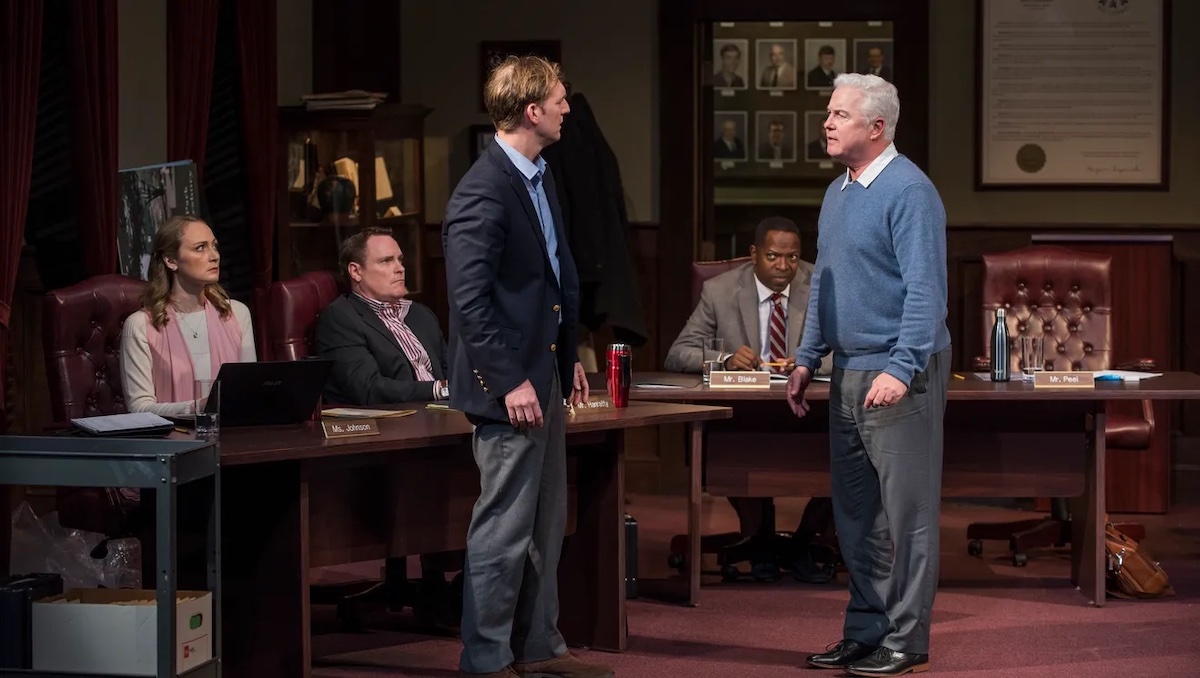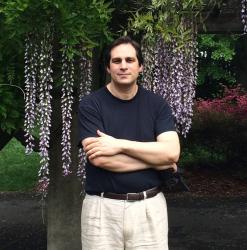In the past 90 years, there have been three periods during which the American intelligentsia has been dominated by the most radical leftists. The first was in the Great Depression. This was when it was commonplace to say that capitalism had failed and the great hope of the world was Stalin’s Russia. A second moment of lunacy took hold in the late 1960s. That was perhaps best captured in Tom Wolfe’s essay “Radical Chic.” A third has overtaken us in the past few years.
No art form has been so affected by these outbreaks as the theater. Thus, in the 1930s Clifford Odets was, however briefly, taken to be our greatest playwright and an oracle of the common man. Similarly, in the 1960s German Marxists had their day as Peter Weiss’s Marat/Sade ran on Broadway, and Bertolt Brecht received no fewer than eight productions on the Great White Way between 1963 and 1970. The current Broadway season includes the abominable and mostly unwatchable Pass Over and the new Tracy Letts play The Minutes. Both were nominated for the Tony Award for Best Play.
Letts is a superb actor and a talented playwright. Quite deservedly, he received the Tony and the Pulitzer for August: Osage County. Those who know it only from the movie may not appreciate how excellent it is: a three-and-a-half-hour work of comedy, melodrama, and social commentary that never fails to entertain. And a good case can be made that Letts should have received another Pulitzer for his intimate and empathetic portrait of the struggles in a working-class life, Mary Page Marlowe.
In The Minutes, Letts presents some big ideas about our country. Yet one wishes he had spent an hour or two in a library to learn something about his subject. Regrettably, he appears not to have bothered. This does not prevent him, however, from lecturing his audience in a tone that mixes hysterical shrieking with bombast and wholesale ignorance. To explain why this is, I must give away the play’s big surprise. I can’t really say that this is a spoiler, though, as that would suggest there was something that was being spoiled.
The first three-fifths of The Minutes is a not terribly clever satirical portrait of a city council meeting in an unnamed city somewhere on the Plains. The jokes given to us are dumb and implausible. For example, the very capable and knowledgeable recording secretary keeps mispronouncing the councilman whose name is Assalone as ASS-a-loan-ee with the emphasis on his rear. (How droll!) Then the play abruptly shifts, and we discover its real subject: the big lies of American history and our many massacres of Native Americans.
This comes up when the bumbling protagonist, a dentist named Peel, new to town, learns that the town has an annual celebration in honor of an event that happened in 1872. The people of the city had always been told that this was when they fought off an attack by Sioux Indians, who had come to steal their children. Peel eventually discovers that this is all a falsehood, an invention. In fact, the townspeople murdered the Sioux, and one of the great fortunes of the town was founded on theft of their land. Even so, the council members—Peel included—decide to band together to conceal the truth because the people, as a character in a better drama commented, “can’t handle the truth.”
I will not for a moment suggest that the treatment of Native Americans by whites has been anything but horrific. However, Letts’ notion that his play is telling some dark hidden truth is bizarre. For starters, the story he has concocted is literally impossible. At one point in the play, Letts lampoons the novel and movie The Searchers for its suggestion that Native peoples might steal white children. Yet that is factual. Indeed, the reasons why the Comanche tribe abducted and raised Caucasian children in West Texas during the late 19th century is a subject that still interests anthropologists. Yet the idea that a town would build its history upon the belief that the Sioux (or Lakota as they are more often called today) would abduct Caucasian children makes no sense, as they did not do this, and anyone living in a town or city with Lakota roots and an interest in the subject would certainly know this.
Nor is Letts’ belief that the Lakota were purehearted innocents consistent with the facts. White settlers did massacre or otherwise take advantage of many peaceful tribes. This is something that all children in American schools are now taught. Hence, my New Jersey elementary school required us to spend several weeks during the fifth and sixth grade learning about the noble and determinedly nonviolent Lenni Lenape Indians who had once lived in our area. To the same extent, most American high schools require students to learn about Andrew Jackson’s brutality toward the Cherokee and of the Trail of Tears. But the Lakota were not always pacifists and, just as they suffered atrocities, they perpetrated them—both upon white settlers and other Native peoples. So why is Letts presenting them as being babes before the slaughter? And why does he mistakenly suppose that American high schools and colleges remain determined to conceal the cruel treatment of indigenous tribes when, if anything, most present-day history textbooks seem more determined to remove any ambiguity by showing only whites as ever in the wrong?
I think that there are two reasons why Letts believes he is a lonely speaker of truth when, in fact, he does not even know the history and the characteristics of the many different tribes he indiscriminately combines in his factitious tale. First, Letts’ suppositions aren’t really his own. They are simply a compendium of received ideas, the flotsam and jetsam of current leftist dogmatism. Attached to that is something more troubling. Letts seems to think that Native Americans are one big they. They’re all good, and whites are all bad. It’s that simple.
In his epigraph to the printed version of the script, Letts quotes Colonel John Milton Chivington endorsing the slaughter of western tribesmen. Chivington is among the most notorious of the Union soldiers who led attacks upon Native peoples. In a particularly appalling case known as the Sand Creek Massacre, Chivington and his men killed between 70 and 163 Cheyenne and Arapahoe who were resting at an encampment in Colorado. These atrocities—among the most shameful in American history—led to a federal investigation. Yet Chivington was not court-martialed for these crimes.
Perhaps Chivington was not punished because he was acting in response to previous attacks by “dog soldiers,” Cheyenne and Arapahoe guerrillas who had killed whites. Or maybe it partly reflected the tribute the army felt it owed Chivington for the enormous bravery and skill he had displayed in fighting Confederate forces during the Civil War—and his passionate commitment to abolitionism before that. In either case, there was no failure to acknowledge the truth of what had happened, then or now. Nor do Chivington’s murders have much to do with the subsequent battles between white troops and the Lakota tribe. But if Native Americans are all the same, what, after all, is the difference? And if you live in a left-wing echo chamber, how would you know what current history books are telling the young?

